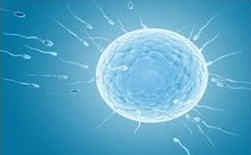IVF/ICSI
IVF (In Vitro Fertilization) is about taking eggs and sperm, putting them together in a lab and letting them fertilize in vitro. If they fertilize, an embryo will form. The tiny embryo is then inserted into the uterus. If it grows and develops, you’ll achieve pregnancy!

Will I Need IVF?
Your fertility specialist gets to know your medical history,test reports and your individual circumstances. There’s lots of reasons we may recommend IVF, and create the best treatment plan for you.
Some common reasons why IVF may be required include:
- Blocked fallopian tubes
- Fallopian tube damage/tubal factor/tubal ligation
- Male infertility relating to sperm quality or quantity
- Endometriosis
- Polycystic ovarian syndrome (PCOS)
- Increased difficulty of conceiving naturally as women age
- Unexplained infertility
- Diminished Ovarian Reserve
- Potential genetic issues where embryo screening may help.
The IVF Process
An IVF ‘cycle’ is how we describe one round of IVF treatment starting with the first day of your period.
Step 1: Stimulating your Ovaries
The stimulation phase generally starts from day 2 or day 3 of your cycle. In a natural monthly cycle, your ovaries normally produce 1 egg. However in IVF cycle you’ll take medication for 8-14 days to encourage growth of more follicles in your ovaries (where the eggs live) hence producing more eggs.
Your specialist prescribes medication specific to your body and treatment plan. It’s usually in the form of injections, which can vary from patient to patient. It can be daunting, but you will be shown exactly how and where to take the injections. You can get your partner involved too and watch and learn together to get it right.
Step 2: Progress evaluation
Once the ovarian stimulation is started, follicular growth is monitored very thoroughly as the whole procedure requires proper timing and care. You will be required to undergo regular tests to make sure that the treatment is progressing very smoothly and to enable the doctors to take the necessary measures for optimizing egg development and numbers.
Step 3: Egg Retrieval or Egg Pick Up
Egg retrieval, or egg ‘pick up’is the process of collecting eggs from your ovaries. It is a hospital day procedure and is done 34 – 36 hours after your last injection. An anaesthetist will get you ready for general anaesthesia. You’ll be asleep and the procedure takes about 20-30 minutes.
After the procedure you will be in the recovery room for about 2 hours and thereafter you’ll be able to walk out on your own. It’s a good idea to have a support person with you as you won’t be able to drive after the procedure.
Step 4: The Sperm
If you’re a couple planning on using fresh sperm, the male will produce a sample the morning of the egg retrieval, collected preferably in the lab premises. If you are using frozen or donor sperm, our scientists will have it ready in the lab. The sperm is graded using 4 different levels of quality. The semen sample is subjected to sperm preparation and the best sperms are selected, and they’re ready and waiting in the lab to be introduced to the eggs.
Step 5: Fertilisation- conventional insemination or intra-cytoplasmic injection (ICSI Treatment).
Once the eggs are collected, these are carefully examined to evaluate their maturity and quality. The finest quality eggs are separated and placed in an incubator. The eggs are usually fertilized in two ways – conventional insemination or intra-cytoplasmic injection (ICSI Treatment). The former involves the placement of a healthy egg in a pool of sperms and the process of fertilization is allowed to take place naturally. However, in ICSI, a healthy sperm is directly injected into a healthy ovum for inducing fertilization.
Step 6: Embryo Development
If the sperm fertilises the egg, it becomes an embryo. We put the embryo into a special incubator where the conditions for growth and development are perfect. We create the perfect growing conditions using a mix of amino acids, just like your body would use to nurture the embryo.
Unfortunately, not all eggs will fertilise and reach the embryo stage. The eggs might not be mature or the sperm not be strong enough. We know you’ll be waiting on news, so we’ll keep you up to date with the progress of your egg, sperm and embryo development.
Stage 7: Embryo Transfer
The embryo is usually transferred within a week following the egg retrieval. However, in case genetic testing is required or in case hormone levels are not in the optimal range, the intended parents might be required to wait a little longer. Till then, the embryo is frozen and preserved in an IVF lab. After the genetic results are out, the healthy embryo is thawed and placed inside the uterus of the intended mother. The number of embryos produced depends upon various factors including the age of the parents. The embryo transfer is a very simple process. It takes about 5 minutes, you’ll be awake, there’s generally no anaesthesia and you can continue with your day, the embryos cannnott fall out if you stand up or go to the toilet.
Step 8: The Final Blood Test
Approximately two weeks after your embryo transfer, you’ll have a blood test to measure your levels of the hormone hCG (human chorionic gonadotropin). Increased level of HCG in your bloodstream usually means a positive pregnancy test. Your nurse will let you know exactly when you need to have your blood test, as it may vary for some patients.
